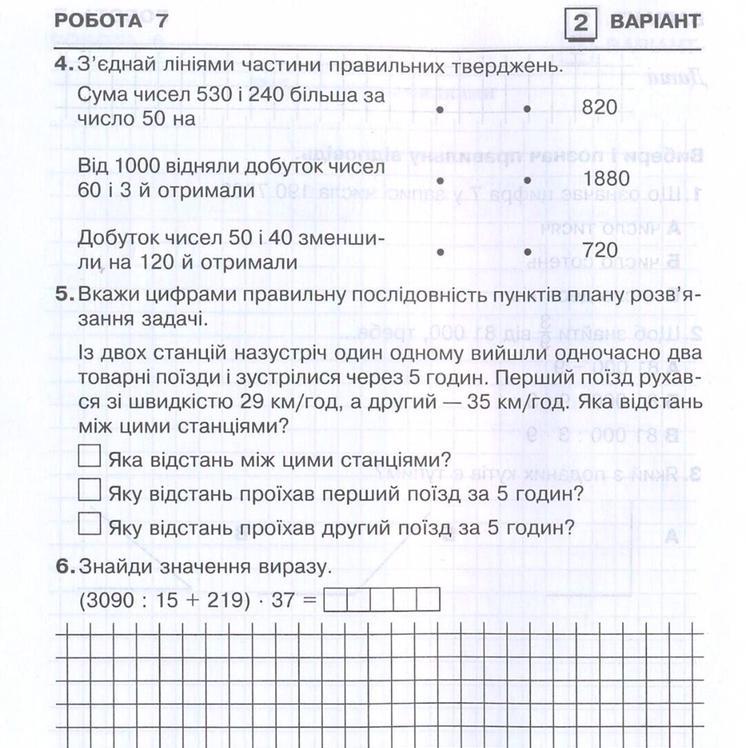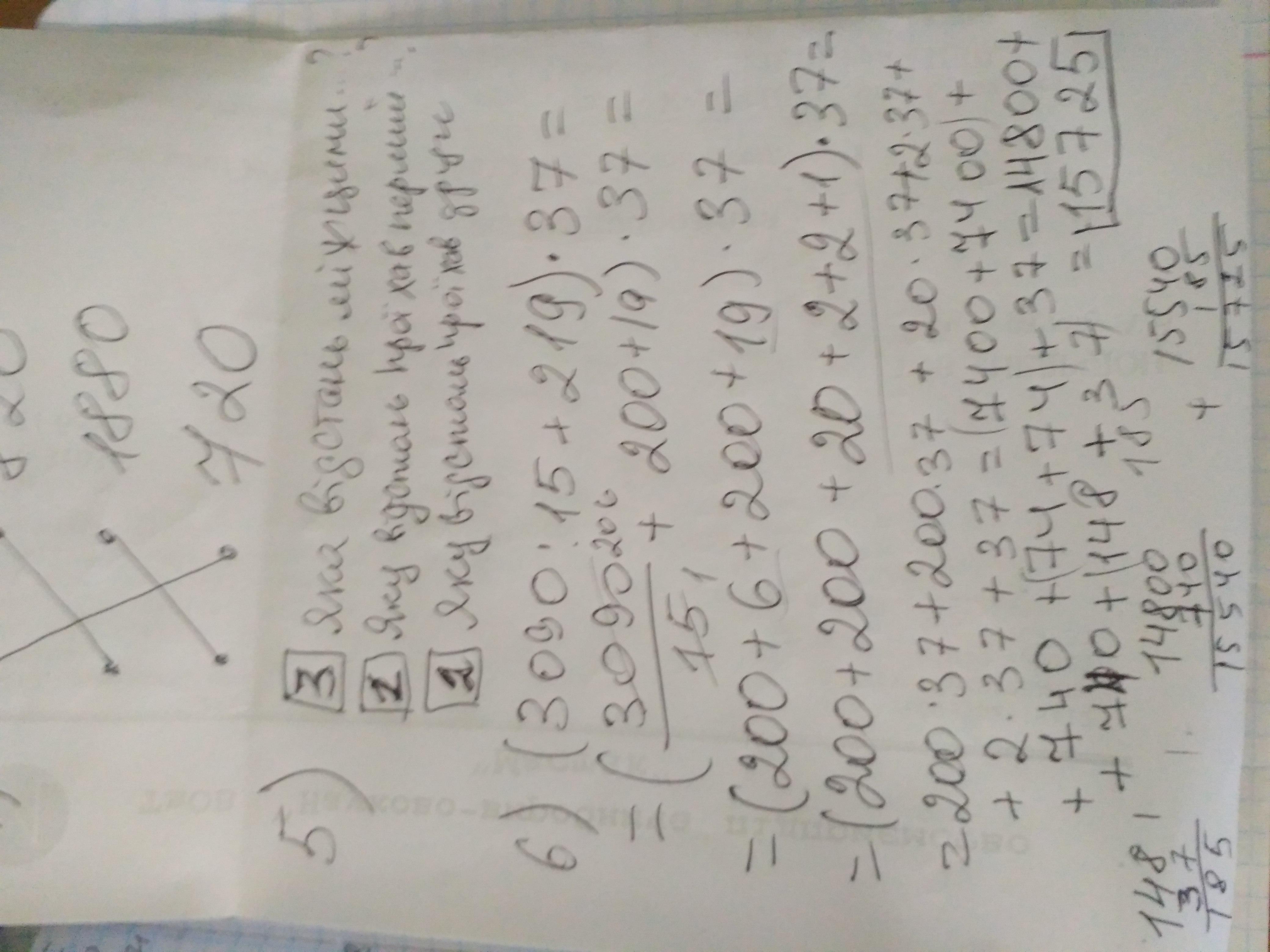Предмет: Математика,
автор: SoniaSmile386
Срочнооооооо!!!!!!!!Сьогодні потрібно зробитииииии!!!! Надіюся тільки на васссссс!!!!!Буду дужееееее вдячна! Думаю знайдеться хороша людина яка допоможеееееее!?!!!!!!
Приложения:

Ответы
Автор ответа:
5
Ответ:
4: Сума числа 530 і 240 більша за число 50 на 720
Від 1000 відняли добуток чисел 60 і 3 й отримали 820
Добуток чисел 50 і 40 зменшили на 120 й отримали 1880
5. 1. Яку відстань проїхав перший поїзд за 5 год?
2. Яку відстань проїхав другий поїзд за 5 годин?
3. Яка відстань між цими станціями?
6. (3090 : 15 + 219) • 37 = 13 600
Автор ответа:
2
Відповідь:
5) 3
1
2
6) 15725
Покрокове пояснення:
Приложения:

Похожие вопросы
Предмет: Русский язык,
автор: sheko2012
Предмет: Русский язык,
автор: sldldkdm
Предмет: Русский язык,
автор: Xal6788
Предмет: Математика,
автор: karinochka2005309
Предмет: Литература,
автор: christina0303